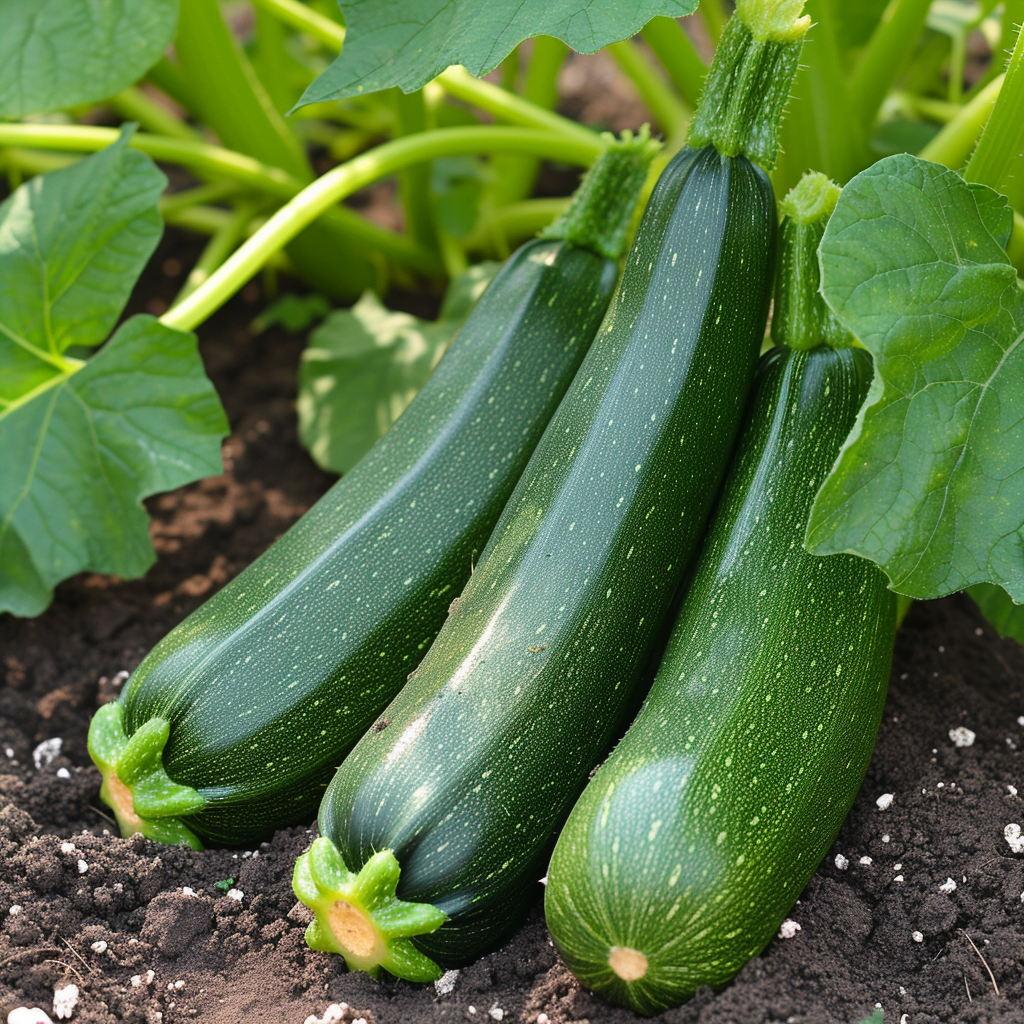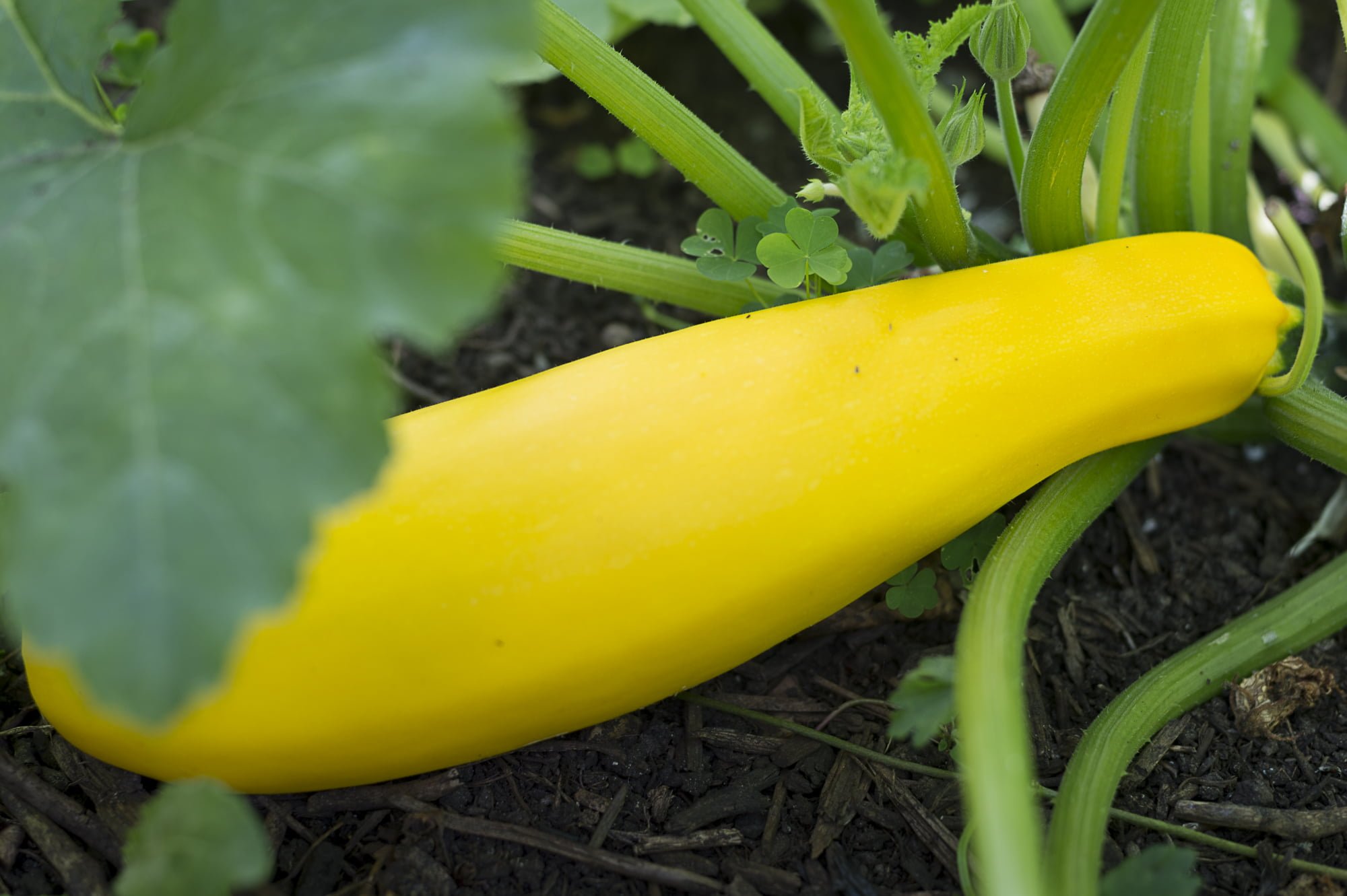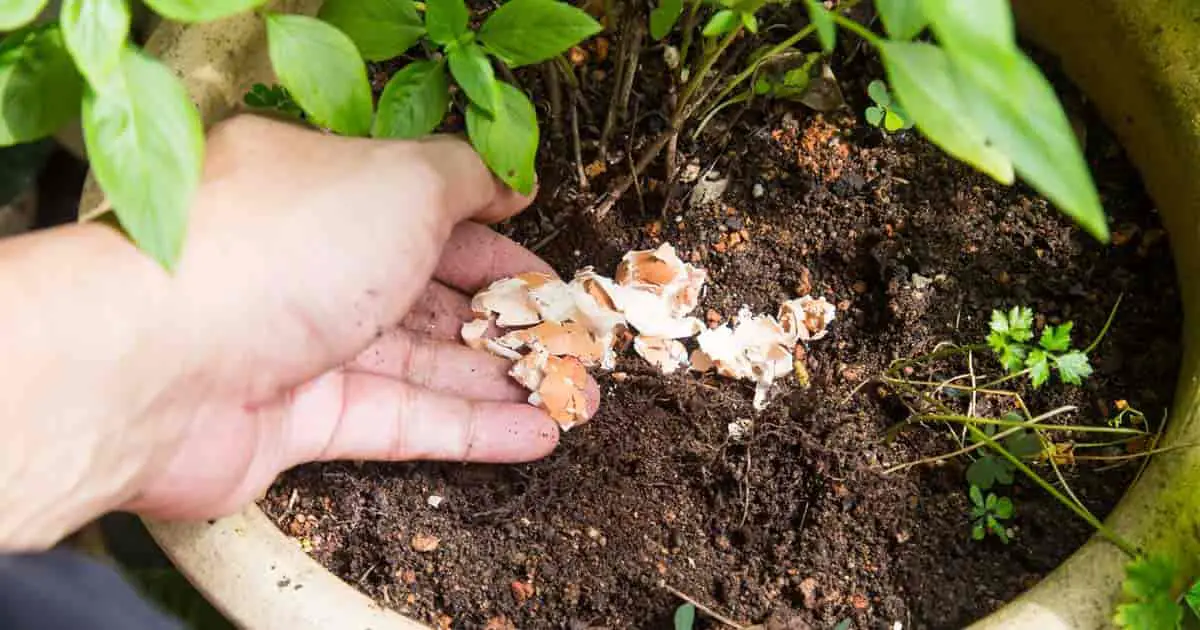You’re here because you want your zucchini plants to thrive and flourish, and we’ve got just the solution for you: adding calcium to the soil. Whether you’re an experienced gardener or just starting out, understanding the importance of calcium for your zucchini plants is crucial. In this article “how to add calcium to soil for zucchini plants”, we will explore the best methods to enrich your soil with calcium, ensuring your plants are healthy, robust, and ready to produce a bountiful harvest. So let’s get started on this journey to transform your zucchini patch into a thriving oasis of green goodness!
Understanding the Importance of Calcium for Zucchini Plants
Calcium’s role in plant growth
Calcium plays a vital role in the growth and development of zucchini plants. It is an essential nutrient that is necessary for the formation of strong cell walls in plants. Calcium is responsible for structurally reinforcing the cell walls, making them stronger and more resistant to disease and pest infestation. Additionally, calcium helps in proper root development, ensuring efficient uptake of water and nutrients by the plants. It also aids in the enzymatic functions within the plant, playing a crucial role in the activation and regulation of various plant reactions.
Effects of calcium deficiency in zucchini plants
A deficiency of calcium in zucchini plants can have detrimental effects on their overall health and productivity. One of the most common signs of calcium deficiency is blossom end rot, which is characterized by the darkening and softening of the blossom ends of the fruits. This condition occurs due to the lack of calcium availability to the developing fruits, resulting in impaired cell wall formation. Calcium deficiency can also lead to stunted growth, weak stems, and increased susceptibility to diseases and pests. Therefore, it is crucial to ensure an adequate supply of calcium to zucchini plants to prevent these issues.
Why adding calcium to soil is necessary
Adding calcium to the soil is necessary to maintain optimal levels of this vital nutrient for zucchini plants. While calcium is naturally present in many soil types, its availability for plant uptake may vary. Factors such as soil pH, nutrient imbalances, and soil texture can affect the availability of calcium to plants. By adding calcium to the soil, you can ensure that zucchini plants have access to an adequate supply of this nutrient, promoting their growth, health, and productivity. Various organic and inorganic sources of calcium can be used to supplement the soil and meet the plants’ calcium requirements.

Organic Sources of Calcium for Soil
Eggshells
Eggshells are an excellent organic source of calcium for soil. They are rich in calcium carbonate, which is easily absorbed by the plants. To utilize eggshells as a calcium source, crush them into fine particles and incorporate them into the soil. This not only provides calcium but also aids in improving the soil structure, promoting drainage, and preventing soil compaction.
Bone Meal
Bone meal is another organic option for adding calcium to soil. It is made from ground animal bones, which are a rich source of calcium and other essential nutrients. Bone meal slowly releases calcium into the soil, ensuring a steady supply over an extended period. To use bone meal, mix it into the soil before planting or apply as a top-dressing around existing plants.
Oyster Shell
Oyster shells are an organic source of calcium that can be used to enrich the soil. They are composed primarily of calcium carbonate and help to raise soil pH while providing a long-lasting supply of calcium. Crushed oyster shells can be incorporated into the soil or applied as a top-dressing.
Fish Bone Meal
Fish bone meal is derived from ground fish bones and is a valuable organic source of calcium for soil. It not only provides calcium but also contributes to the overall fertility of the soil due to its high phosphorus content. When using fish bone meal, mix it into the soil during the planting process or apply as a side dressing.
Crushed Seashells
Crushed seashells, similar to crushed oyster shells, are an excellent organic source of calcium for soil. They contain calcium carbonate and help adjust soil pH while providing a slow release of calcium. Incorporate crushed seashells into the soil to enhance calcium availability for zucchini plants.
Compost
Compost, a valuable organic amendment, can also contribute to calcium availability in the soil. While it may not be a direct source of calcium, compost helps in improving overall soil health and structure. It enhances nutrient cycling, microbial activity, and the retention of moisture, creating a favorable environment for calcium uptake by zucchini plants.

Inorganic Sources of Calcium for Soil
Calcitic Lime
Calcitic lime, also known as calcium carbonate, is an inorganic source of calcium commonly used to raise soil pH and provide calcium to plants. It is derived from limestone and contains a high concentration of calcium. Calcitic lime is available in powder or pellet form and can be applied to the soil as needed. Ensure proper testing and follow recommended application rates to avoid over-liming the soil.
Dolomitic Lime
Dolomitic lime is another inorganic source of calcium that also contains magnesium. It is derived from dolomite, a mineral composed of calcium magnesium carbonate. Dolomitic lime helps to correct calcium and magnesium deficiencies in the soil, making it suitable for zucchini plants. However, it is essential to evaluate the plant’s magnesium requirements before using dolomitic lime and consider the soil’s existing magnesium levels to prevent over-application.
Gypsum
Gypsum, or calcium sulfate, is an inorganic source of calcium that also helps improve soil structure. It is used primarily for its ability to alleviate soil compaction and promote better drainage. Gypsum is typically applied to the soil before planting and should be incorporated into the soil to maximize its effectiveness. While gypsum provides calcium, its main role is the improvement of soil conditions for zucchini plants, indirectly benefiting calcium availability.
Calcium Nitrate
Calcium nitrate is a water-soluble, inorganic source of calcium that can be applied as a liquid fertilizer. It provides plants with readily available calcium, allowing for quick uptake and utilization. Calcium nitrate is usually applied through foliar spraying or irrigation systems, making it more suitable for resolving acute calcium deficiencies or for use in hydroponic systems.
Preparing the Soil for Calcium Application
Testing soil pH and nutrient levels
Before applying calcium to the soil, it is essential to conduct a soil test to assess the pH and nutrient levels. Soil pH affects calcium availability, with slightly acidic to neutral pH being optimal for calcium uptake. Additionally, soil testing provides information about existing nutrient imbalances, allowing for targeted amendments. Based on the soil test results, appropriate adjustments can be made to ensure an optimal environment for zucchini plants.
Amending soil texture
Soil texture plays a crucial role in calcium availability and uptake. Sandy soils tend to have lower calcium-holding capacity, while clay soils may retain calcium but may suffer from poor drainage. Amending the soil texture through techniques such as adding organic matter, like compost, can improve the soil’s ability to retain calcium and provide a favorable environment for zucchini plants.
Clearing debris and weeds
Before applying calcium to the soil, it is essential to clear the area of any debris and weeds. Debris and weeds can hinder the effective distribution and absorption of calcium in the soil. Removing them ensures that the calcium amendments reach the targeted areas and are readily available for the zucchini plants’ roots.
Loosening compacted soil
Compacted soil can impede the movement of water and nutrients, including calcium, restricting their availability to the zucchini plants. Loosening compacted soil through methods such as tilling or using organic soil amendments can improve water infiltration and root penetration, facilitating better calcium uptake. It is important to note that excessive tilling can damage soil structure, so proceed with caution and avoid overworking the soil.

Methods for Applying Calcium to Soil
Top-dressing with organic sources
One of the simplest ways to add calcium to the soil is through top-dressing with organic sources. This method involves applying the chosen organic source, such as crushed eggshells or bone meal, directly to the soil surface around the base of the zucchini plants. As the organic material breaks down, calcium is gradually released into the soil, ensuring a consistent supply for the plants. Top-dressing can be done throughout the growing season as needed.
Incorporating organic matter into the soil
Another effective method for adding calcium to soil is by incorporating organic matter, such as compost or well-rotted manure, into the soil. This not only improves soil structure but also enhances nutrient availability, including calcium. Mix the organic matter thoroughly into the soil before planting or during the preparation of the planting hole.
Applying inorganic sources
Inorganic sources of calcium, such as calcitic lime, dolomitic lime, gypsum, or calcium nitrate, can be applied to the soil according to the manufacturer’s instructions. Generally, these substances are evenly applied to the soil surface and then worked into the soil through gentle tilling or watering. Applying inorganic sources ensures a targeted and readily available supply of calcium for the zucchini plants.
Foliar application
In cases of severe calcium deficiency or as a preventive measure, foliar application of calcium can be beneficial. Calcium nitrate or calcium chloride can be dissolved in water and sprayed directly onto the leaves of the zucchini plants. This method allows for quick absorption of calcium through the plant’s leaves, bypassing any soil-related issues that may impede calcium uptake.
Factors to Consider when Adding Calcium to Soil
Soil pH
Soil pH plays a crucial role in calcium availability to plants. A slightly acidic to neutral pH range of 6.0 to 7.0 is generally ideal for optimal calcium uptake. If the soil pH is too acidic or alkaline, it may hinder calcium availability and lead to deficiencies. Conducting a soil test and adjusting the pH, if necessary, can promote better calcium uptake by zucchini plants.
Calcium to magnesium ratio
Maintaining a proper calcium to magnesium ratio is essential for healthy plant growth. While both calcium and magnesium are important nutrients, an imbalance between the two can lead to nutrient deficiencies. The ideal calcium to magnesium ratio is typically around 7:1. If the ratio is significantly skewed, consider adjusting the soil amendments or applying amendments, such as dolomitic lime, to restore balance.
Amount of calcium needed
The amount of calcium required for zucchini plants can vary based on various factors, such as soil type, plant age, and growth stage. Conducting a soil test can provide accurate information about the existing calcium levels and help determine the amount of calcium needed for supplementation. Follow the recommendations provided by the soil test results or consult with a local agricultural extension service to ensure the optimal application rate.
Timing of application
Timing is critical when adding calcium to the soil. It is best to incorporate calcium amendments into the soil before planting or during soil preparation to ensure that zucchini plants have access to calcium from the early stages of growth. Additionally, monitoring the calcium levels throughout the growing season and making adjustments as needed can help maintain optimal calcium availability for the plants.

Mulching Strategies for Retaining Calcium in Soil
Choosing suitable mulch materials
Mulching is an effective way to retain moisture, suppress weed growth, and maintain a stable soil temperature. When selecting mulch materials for zucchini plants, consider using organic options such as straw, compost, or shredded leaves. These materials gradually break down over time and contribute organic matter to the soil, enriching its nutrient content, including calcium.
Applying mulch around zucchini plants
To retain calcium in the soil, apply mulch around the base of zucchini plants. This helps to prevent soil erosion, reduce nutrient leaching, and maintain a more consistent soil moisture level. Spread a layer of mulch, about 2-4 inches thick, around the plants, ensuring that the mulch does not directly touch the plant stems. This will allow for proper air circulation and prevent moisture-related issues.
Maintaining mulch throughout the growing season
Mulch maintenance is crucial for the long-term retention of calcium in the soil. Regularly check the mulch layer, adding more as needed to maintain the desired thickness. Replenishing the mulch throughout the growing season helps to prevent weed growth, conserve moisture, and enhance nutrient cycling. By maintaining a healthy layer of mulch, you can support the soil’s calcium levels and promote optimal conditions for zucchini plants.
Importance of Proper Watering for Calcium Uptake
Irrigation practices for calcium absorption
Proper watering practices are essential for calcium uptake by zucchini plants. Adequate soil moisture allows for the movement of calcium through the soil and into the plant roots. Avoid excessive wetting or drying of the soil, as both conditions can negatively affect calcium uptake. To ensure optimal watering, monitor the soil moisture levels regularly and adjust irrigation schedules accordingly.
Maintaining consistent moisture levels
Consistency in soil moisture levels promotes efficient calcium uptake. Zucchini plants prefer a slightly moist soil, but overwatering or underwatering can lead to calcium-related issues. Monitor the soil moisture using a moisture meter or by gently probing the soil with your finger. Water the plants deeply and thoroughly when the top inch of soil feels dry, ensuring that the water reaches the root zone and allows for effective nutrient uptake.
Preventing overwatering or underwatering
Overwatering or underwatering zucchini plants can impact calcium availability and uptake. Overly wet conditions can create excessive soil moisture, leading to poor oxygen availability and root rot. On the other hand, underwatering can cause stress and hinder nutrient absorption by the roots. Achieving a proper balance in watering practices promotes healthy calcium uptake and overall plant vitality.

Signs of Success and Troubleshooting
Indicators of improved calcium levels in zucchini plants
Successful calcium supplementation can be observed through various indicators in zucchini plants. The reduction or elimination of blossom end rot is a positive sign of improved calcium levels. Healthy fruit development, strong stem growth, and overall vigor are also indications of successful calcium uptake. Additionally, improved disease resistance and increased productivity are positive outcomes that can result from maintaining adequate calcium levels in the soil.
Common issues when adding calcium to soil
When adding calcium to the soil, certain common issues may arise. One of the most common is the improper application of inorganic calcium sources, which can lead to calcium toxicity or imbalances with other nutrients. Inadequate incorporation of organic matter or amendments into the soil can result in uneven calcium distribution or limited availability. Additionally, ignoring soil pH or nutrient imbalances can hinder calcium uptake. It is crucial to carefully follow recommended guidelines and consider individual soil and plant requirements.
Potential remedies for problems
If problems are encountered when adding calcium to the soil for zucchini plants, there are potential remedies available. To address calcium toxicity or imbalances, it may be necessary to flush the soil with water and adjust nutrient applications accordingly. Uneven calcium distribution can be remedied by thoroughly mixing amendments into the soil and ensuring proper incorporation. Correcting nutrient imbalances through targeted amendments and adjusting soil pH can help overcome challenges related to calcium uptake.
Maintaining Adequate Calcium Levels in the Soil
Regular soil testing
Regular soil testing is crucial for maintaining adequate calcium levels in the soil. By monitoring calcium levels and other essential nutrients, you can make informed decisions about the appropriate amendments to apply. Soil testing also helps identify nutrient deficiencies or imbalances before they negatively impact plant health. Aim to conduct soil tests annually or as recommended by local agricultural extension services.
Yearly soil amendment
To maintain optimal calcium levels in the soil, consider incorporating yearly soil amendments. This can involve the addition of organic matter, like compost, which gradually releases calcium and improves overall soil health. Inorganic amendments, based on soil test results, can also be used to correct nutrient imbalances or enhance calcium availability. Regular soil amendments ensure a continuous supply of calcium for zucchini plants and contribute to long-term soil fertility.
Crop rotation and nutrient management
Implementing crop rotation and proper nutrient management practices can aid in maintaining adequate calcium levels in the soil. Rotating zucchini plants with other crops helps to prevent the depletion of specific nutrients, including calcium, from the soil. Additionally, practicing proper nutrient management, such as avoiding excessive fertilization or relying solely on one nutrient source, promotes balanced nutrition for zucchini plants and reduces the risk of calcium deficiency.
Conclusion
In conclusion, understanding the importance of calcium for zucchini plants is crucial for their growth and productivity. Calcium plays a vital role in cell wall formation, root development, and enzymatic functions within the plants. Recognizing the effects of calcium deficiency and the necessity of adding calcium to the soil can guide you in taking appropriate measures to ensure optimal calcium availability for your zucchini plants.
Whether utilizing organic or inorganic sources, properly preparing the soil, and implementing effective application methods will support calcium uptake. Factors such as soil pH, calcium to magnesium ratio, calcium requirements, and timing of application should be considered for successful calcium supplementation. Additionally, mulching strategies, proper watering, and regular soil testing contribute to maintaining adequate calcium levels in the soil. By consistently monitoring and addressing calcium needs, you can enjoy healthy and thriving zucchini plants with improved disease resistance and enhanced productivity.



